Anterior Cruciate Ligament and Meniscal Tears: A Multi-modality Review
Images

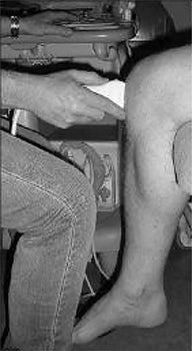
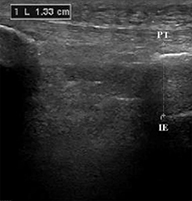
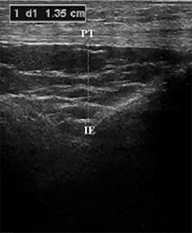
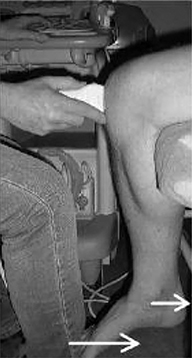
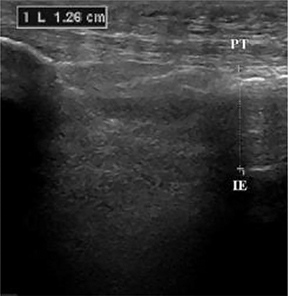
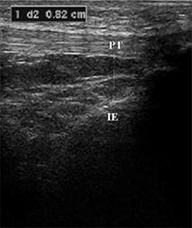
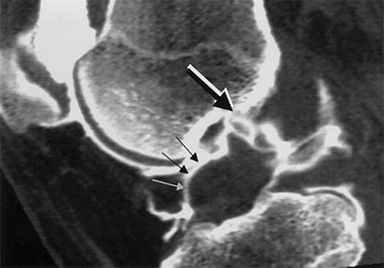
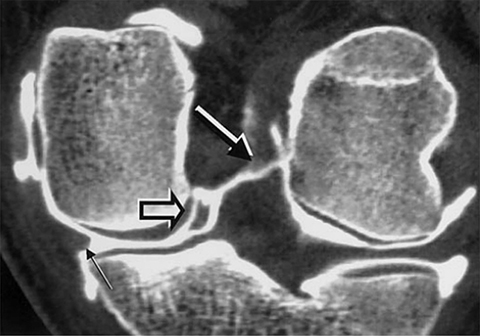
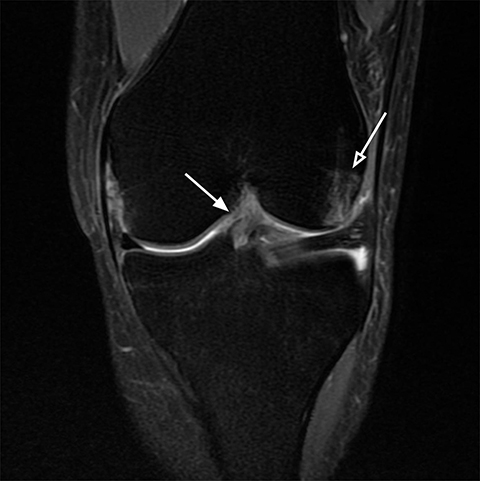
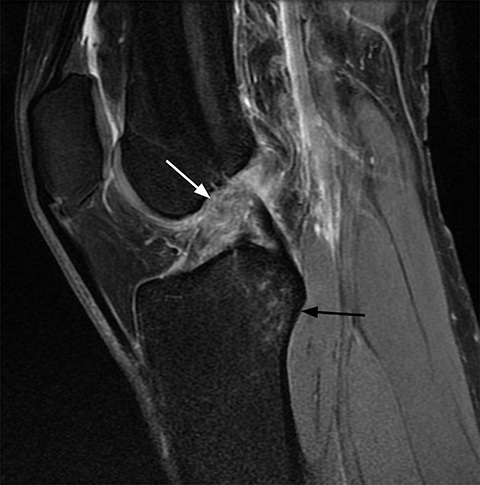
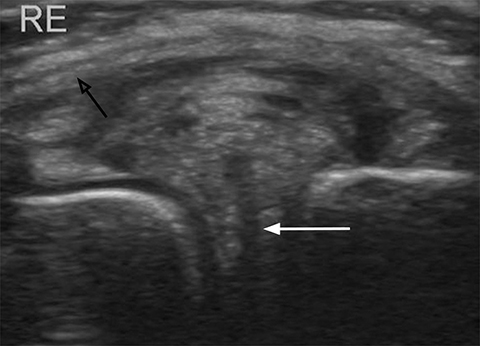
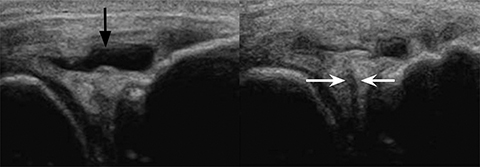
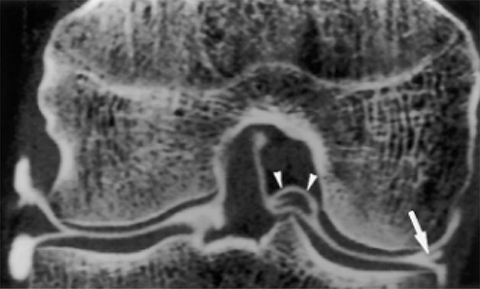
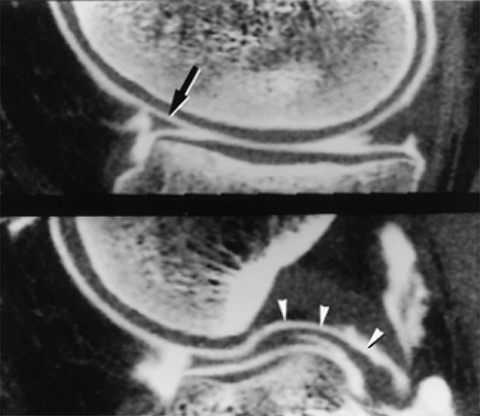
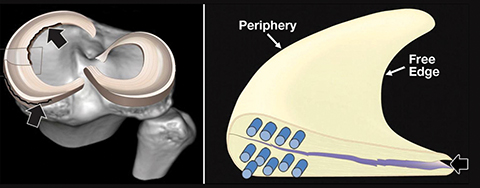

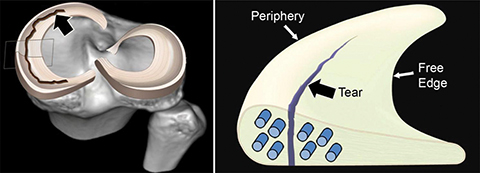
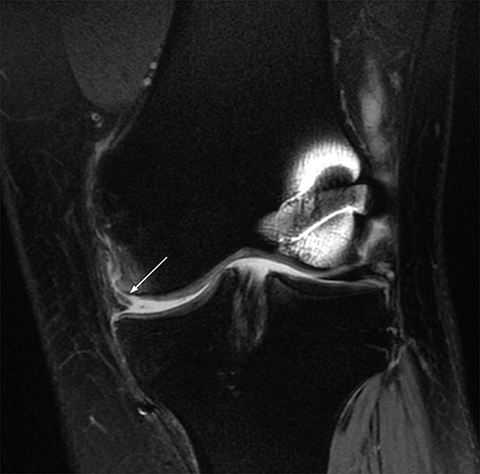
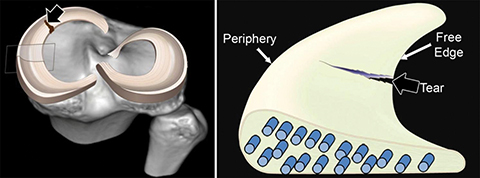

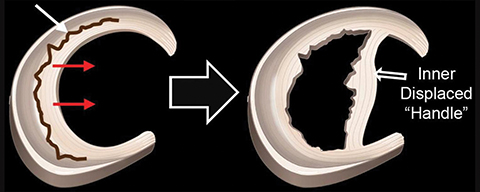
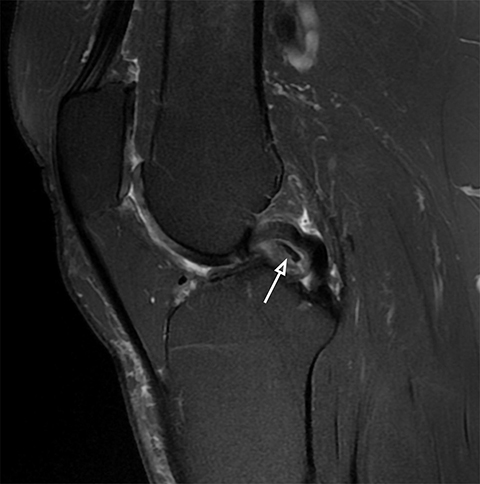
This article is accredited for one SA-CME credit. Visit appliedradiology.org/SAM2 for full SA-CME information.
Injuries to the anterior cruciate ligament (ACL) are increasing with time with an estimated cost for these injuries of almost a billion dollars per year in the United States alone. Women, in particular, appear to be at greater risk of ACL injury than men, especially during activities that involve pivoting and jumping such as lacrosse, and soccer.1 Patients presenting with instability after ACL injury are at increased risk of osteoarthritis, but ACL reconstruction can resolve the objective and subjective joint instability, allowing patients to return to preinjury levels of athletic activities.2 Meniscal tears are also a significant source of morbidity in both the younger and older populations. Thankfully, meniscal repair is beneficial for patients with viable meniscal tissue and an injury pattern that is amenable to intervention and arthroscopic partial meniscectomy (APM) will improve symptoms in those not eligible for repair.3 Understanding of the pathogenesis, associated findings, and appearance of these injuries on all imaging modalities is critical to their accurate diagnosis and timely treatment. Radiographs may show indirect signs of ACL and meniscal injuries. Recently, ultrasonography is being utilized more often in the workup of these conditions as an adjunct to physical exam and as an initial screening tool. Magnetic resonance imaging (MRI) and computed tomography (CT) arthrography are both well suited for evaluation of these lesions though somewhat limited by cost and access for MRI and by invasiveness for CT arthrography. Accurate detection, description, and classification of these injuries are of paramount importance as they indicate the need for orthopedic evaluation as well as help guide the surgeon during arthroscopy.
Pathogenesis
ACL Tears
Nearly three quarters of all ACL injuries are non-contact injuries.4 A variety of theories have been proposed for the precise mechanism of ACL tears, including axial compressive forces on the lateral aspect of the joint, inadequate dampening of ground reaction forces, whole-body kinematics, and valgus forces.5 Axial compressive forces on the tibiofemoral joint during the transition from non-weight bearing to weight bearing cause anterior translation of the tibia which has been shown to lead to ACL rupture in cadaveric studies. Inadequate dampening of ground reaction forces and particular whole-body kinematics such as torso, hip, and ankle positioning also increase the risk of ACL injury by increasing the compressive and anterior forces at the tibiofemoral joint.4 Valgus forces may also play a part in ACL injuries as increased knee abduction places greater axial forces on the lateral side of the knee than on the medial side leading to an amplification of lateral compressive forces and increased internal rotation of the joint.4,6
Meniscal Tears
Like ACL tears, most of the mechanisms of injury for most meniscal tears are non-contact in nature. These occur while cutting, decelerating, or landing from a jump. Older patients are often unable to pinpoint the inciting event that caused the injury, but instead are only aware of the symptoms themselves. This is due to age-related degeneration of the meniscus leading to a lower threshold for injury.7 Specific mechanisms of meniscal tears can be divided into two categories based on the aforementioned scenarios: abnormally large forces on a normal meniscus resulting in longitudinal or radial tears, and normal forces on a degenerative meniscus resulting in horizontal tears, usually in the posterior half of the meniscus.5
Medial meniscal tears are more common than lateral meniscal tears, likely due to the medial meniscus being less mobile and thus bearing more force during weight bearing. Some 56% of all tears involve the posterior horn of the medial meniscus, with anterior meniscal tears representing only 2% of medial and 16% of lateral meniscal tears. Lateral meniscal tears occur more frequently in younger patients in whom tears are more frequently related to sporting events and concomitant ACL tears.5
Diagnostic Imaging: ACL Tears
Radiographs
As the ACL is not well visualized on radiographs, only indirect signs of ACL injury are used. The most common radiographic signs of ACL tears are Segond fractures, avulsion fractures of the anterior tibial spine (Figure 1), impacted lateral femoral condyle fractures, and fractures of the posterior lateral tibial plateau.8 If any of these abnormalities are found, additional imaging should be acquired to identify the extent of the ACL injury and any additional injuries to the other components of the knee joint.8
Ultrasound
Ultrasound can aid the examiner in determining the presence of an ACL injury. Studies have been performed using both dorsal and ventral approaches to the ultrasound-guided examination. with both demonstrating good sensitivity and specificity (dorsal approach: 85-97% sensitivity and 87.5-98% specificity; ventral approach: 70-91.9% sensitivity and 95.6-98% specificity).9 Though the techniques vary between studies, in general, the examiner assesses anterior translation of the tibia in both knees and compares the unaffected knee to the knee in question. Then, the translation in the unaffected knee is subtracted from the total translation in the injured to give a side-to-side difference (Figure 2).9 Some studies have used only the side-to-side difference with cutoffs at 1 to 5 mm to determine whether there is a positive result from the test. Other tests also include total translation of the affected knee in the algorithm, which helps to improve specificity.9 In general, ultrasound can help to make the physical examination more quantitative; however, like all physical examinations in the diagnostic period, pain may interfere with the patient’s ability to move the knee joint freely. It is also worth noting that ultrasound may be a good choice for patients with metallic implants, as MRI artifacts can interfere with accurate assessment of the ACL.9
CT Arthrography
CT arthrography is infrequently used for patients with suspected ligamentous injury due to MRI’s superior visualization of soft tissues. Additionally, MRI does not expose the patient to radiation nor does it necessitate the use of iodinated contrast. As such, CT arthrography may be avoided in children and patients with known allergic reactions to iodinated products. However, CT arthrography is still utilized where MRI is unavailable, in patients with contraindications to MRI, or those with ferromagnetic implants.10 When CT arthrography is used to assess ACL injuries, it has been shown to be quite accurate for diagnosing ACL tears (sensitivity 84-94%, specificity 91-98%) and concomitant injuries to the menisci (sensitivity 80-97%, specificity 75-95%).10 The ACL can generally be considered normal on cross-sectional imaging if it appears as a continuous tubular structure on contiguous coronal and sagittal reformations. On axial reformats, the ACL will appear oval in structure and can be located medial to the lateral femoral condyle. It should appear to attenuate intermediately at approximately the same level as the patellar tendon and lower than that of the iodinated contrast material.10 Signs of ACL tear on CT arthrography are the same as those on MRI: ligament discontinuity, abnormal contours, and abnormal course (Figure 3).10 Indirect signs include anterior translocation of the lateral tibial plateau, abnormal depression of the lateral femoral condyle notch, and fracture of the posterior margin of the lateral tibial plateau.10
Magnetic Resonance Imaging
MRI is widely considered the best modality for evaluating the ACL in the acutely injured, chronically injured, and reconstructed states.11 Multiple meta-analyses have been performed on the diagnostic accuracy of MRI in suspected ACL injuries, with sensitivity of 86.5-94.5% and specificity of 93-95.3%.12 On MRI, the ACL has low T1- and T2-weighted signal and can be found within the lateral aspect of the intercondylar notch. When ACL injury is suspected, sagittal, coronal, and axial planes should all be examined for abnormally increased T2-weighted signal and/or abnormal contour. An oblique coronal plane can be used to better evaluate low-grade or chronic injuries, as well as a reconstructed ACL. Direct signs of an ACL tear on MRI are the same as those on CT arthrography, namely ligament discontinuity, abnormal contours, and abnormal course.10,11 Indirect signs of ACL tear include bone bruises, fractures, meniscal tears, anterior subluxation of the tibia, and other ligamentous injuries (Figure 4).1,6,11,13 Specific MRI sequences that may prove beneficial in ACL injury evaluation include fluid-sensitive sequences, such as T2-weighted and proton density sequences, both of which are sensitive for ACL injury and injury to the surrounding tissues. T1-weighted and gradient echo sequences are also beneficial, as they can help assess the surrounding cartilage and bony tissues for damage.6,11 Bone bruises will appear as an ill-defined area of low signal intensity on T1-weighted imaging with increased signal intensity on fluid-sensitive sequences (Figure 4). These bone bruises are created when the femur and tibia impact each other during the injury and are therefore often located at the posterior aspect of the lateral tibial plateau and mid-portion of the lateral femoral condyle near the condylopatellar sulcus.6
Meniscal Tears
Radiographs
As with ACL tears, meniscal tears are poorly visualized on radiographs. Similarly, they must be identified indirectly with signs such as cortical avulsion fractures. As with ACL tears, additional imaging will be required to assess the extent of meniscal injuries.14
Ultrasound
Ultrasound is an infrequently utilized tool in the initial assessment of meniscal tears. However, recent studies have found that ultrasound has a sensitivity of 86.2-86.4% and a specificity of 69.2-84.9% in diagnosing meniscal tears.12,15 To assess the anterior horn and the middle zone of the medial and lateral meniscus, dynamic coronal images of the knee in question should be obtained with the patient in the lateral decubitus position with the knee at 30 degrees of flexion. To assess the posterior horns, place the patient in the prone position with the knee extended. All images from the affected knee should be compared against those in the unaffected knee.12 Real Time Compound Sonography (RTCS) is a relatively new technique that has been found to be superior to conventional grayscale images. RTCS is also beneficial specifically in the assessment of menisci, and should be utilized where available.16 Additionally, both linear and convex probes should be used, if available.12 To identify meniscus tears, look for evidence of a hypoechoic area within the meniscus itself; take care not to misinterpret the popliteal hiatus as a lateral meniscal tear (Figure 5).17 Comparing the anatomy with that of the unaffected knee should help to reduce error. Then, during dynamic examination, look for any extrusion of the meniscus, again comparing the findings to those in the unaffected knee (Figure 5).12
Limitations of ultrasound include reduced visualization of tears in the inner portion of the meniscus, particularly small inner tears. Bucket handle tears are also hard to diagnose via ultrasound, owing to decreased visualization of the portion of the meniscus in the intercondylar notch. Additionally, MRI is more accurate in degenerative meniscal tears and allows a more accurate characterization of concomitant intra- and extracapsular injuries, such as bone bruises, that are not well visualized on ultrasound.12 Traditionally, it has been thought of as more experimental and limited in terms of its clinical applications owing to multiple studies with poor results in the 1990s.15 However, given the promising statistics in recent studies, the high cost of MRI and arthroscopy, and the sometimes limited availability of MRI, ultrasound may be more heavily utilized in the coming years.12
CT Arthrography
CT arthrography, like ultrasound, is infrequently utilized to evaluate meniscal injuries. There are several reasons for this, including its invasiveness, exposure of the patient to radiation, and the improved bone and soft tissue visualization of MRI. However, as in ACL assessment, CT arthrography is useful for patients where MRI is unavailable or in patients with contraindications to MRI (eg, ferromagnetic implants).18 In cases where CT arthrography has been studied, it has been shown to be quite accurate in the assessment of meniscal injury, with high sensitivity (93-99%), specificity (87-98%), and interobserver agreement (0.899 kappa coefficient for presence of a meniscal lesion).18
Both menisci are roughly triangular in cross-section. The outer rims are convex and attach to the joint capsule, while the inner rims are concave, thin, and free. The medial meniscus can generally be considered normal on cross-sectional imaging if it appears as a C-shaped structure that is larger posteriorly in the anteroposterior dimension. It is attached to the tibia anteriorly, along the outer rim, and posteriorly. Its anterior attachment is anterior to the tibial attachment of the ACL, the outer rim attachment is at the edge of the joint capsule, and the posterior attachment is immediately anterior to the posterior cruciate ligament (PCL).
The lateral meniscus is considered normal on cross-sectional imaging if it appears more circular and uniform in width than the medial meniscus. It is also attached to the tibia anteriorly, along its outer rim, and posteriorly. Anteriorly, it attaches to the medial meniscus via the intermeniscal ligament. Posteriorly, it has a more complex attachment with connections to the PCL and the medial femoral condyle through the ligaments of Wrisberg (posterior meniscal-femoral ligament) and Humphrey (anterior meniscal-femoral ligament). Also of note, the lateral meniscus is also attached to the popliteus tendon, but it is not attached to the lateral collateral ligament (LCL) and is more mobile than the medial meniscus.5,7,19,20 Generally, meniscal abnormalities can be identified via contour irregularities, peripheral separation, or the observation of a meniscal tear. Contour irregularities are defined as altered meniscal shape with truncation, blunting, flattening, or rounding of the inner borders (Figure 6).18 Peripheral meniscal separation is defined as extrusion of the meniscus more than 1-3 mm from the tibial margin or visible separation of the meniscus from the joint capsule, and in the case of CT arthrography this space would be filled with contrast material. Likewise, meniscal tears can be seen in CT arthrography as contrast material tracking into the substance of the meniscus.5,18
MRI
MRI is a well-established modality for diagnosing meniscal injuries. Meta-analyses have shown it to have a pooled sensitivity and specificity for diagnosing meniscal injury of 91-93% and 81-88%, respectively, for medial meniscus tears and 76-79% and 93-95%, respectively, for lateral meniscus tears.5,21,22 A normal, healthy meniscus will show low intensity on all imaging sequences. Short echo time (TE) sequence imaging such as proton density and T1-weighted imaging are the most sensitive for detecting meniscal tears whereas T2-weighted abnormalities are very specific.20,21 Direct signs of meniscal tear include unequivocal surfacing signal (ie, hyperintensity extending to the articular surface), missing meniscal tissue, and a displaced meniscal fragment.5,20 Indirect signs include meniscal cysts, torn or absent popliteomeniscal fascicle, edema-like pattern in the subarticular marrow, and subchondral bone contusions in patients with concomitant ACL tears.5
Classification
ACL Tears
ACL injuries can range from low-grade sprains without tearing of the ligament (Grade I sprain), to partial-thickness tears in which some of the fibers of the ACL have torn (Grade II sprain), to full-thickness tears of the ACL (Grade III sprain). In younger patients, the ACL may avulse from the tibial attachment site, as well.11 These tears can be located in the proximal, midsubstance, distal, or they may involve the femoral or tibial attachment. Most tears tend to occur in the mid- to proximal aspect of the ligament and will appear with increased T2-weighted signal and an abnormal contour. In some full-thickness tears fluid or an amorphous mass replaces the discrete ACL fibers. In partial tears, the anteromedial bundle is most commonly involved.11 MRI cannot accurately determine clinically stable and unstable ACL injuries, but the presence of significant anterior tibial translation, uncovering of the posterior horn of the lateral meniscus, and a hyperbuckled PCL may aid in diagnosis of an unstable tear.23
Meniscal Tears
There are several types of meniscal tears; each is described in terms of location and morphology. There are two menisci in each knee: lateral and medial. There are three regions within each meniscus: the anterior horn, the body, and the posterior horn. Combining these, a specific location can be determined—for example, the posterior horn of the lateral meniscus.24 No specific MRI-based classification system has been formally adopted to describe meniscal tear morphology. Tears are generally described as horizontal, longitudinal, radial, root, complex, displaced, or bucket-handle tears.25 Horizontal tears run parallel to the tibial plateau and involve either the articular surface or the central free edge. They then extend to the periphery, dividing the meniscus into superior and inferior halves (Figure 7). Longitudinal tears run perpendicular to the tibial plateau as well as parallel to the long axis of the meniscus. These tears divide the meniscus into central and peripheral halves; they do not need to involve in the free edge of the meniscus. (Figure 8). Radial tears run perpendicular to the tibial plateau and the long axis of the meniscus. These tears extend from the free edge toward the periphery. (Figure 9). Root tears are usually radial-type tears that involve either the anterior or posterior roots. Complex tears contain a combination of radial, horizontal, and longitudinal components with the meniscus often appearing fragmented and tears extending into multiple planes. Displaced tears include free fragments, displaced flap tears, and bucket-handle tears. Bucket-handle tears usually occur at the medial meniscus and involve central migration of the “handle” (ie, the inner fragment; Figure 10).24
Conclusion
ACL and meniscal tears are common noncontact injuries that can be readily identified with a variety of imaging modalities. Recognition of the indirect signs of ACL tears on plain radiographs is an important skill for the general radiologist, but radiography is clearly inferior to the other modalities. Ultrasound has reasonably good sensitivity and specificity in the identification of ACL and meniscal tears. Given the lower cost and wider accessibility of ultrasound, it is likely underutilized in the workup of knee pain pathology. CT arthrography is sensitive and specific for ACL and meniscal tears, but it is usually reserved for cases in which the patient cannot undergo MRI or where MRI is unavailable. Since its advent, MRI has been the mainstay for diagnosing both types of injuries, as it has good sensitivity and specificity for diagnosing and classifying both ACL and meniscal tears.
References
- Patel SA, Hageman J, Quatman CE, Wordeman SC, Hewett TE. Prevalence and location of bone bruises associated with anterior cruciate ligament injury and implications for mechanism of injury: a systematic review. Sports Med. 2014;44(2):281-293. doi:10.1007/s40279-013-0116-z
- Benjaminse A, Gokeler A, van der Schans CP. Clinical diagnosis of an anterior cruciate ligament rupture: a meta-analysis. J Orthop Sports Phys Ther. 2006;36(5):267-288. doi:10.2519/jospt.2006.2011
- Mordecai SC, Al-Hadithy N, Ware HE, Gupte CM. Treatment of meniscal tears: An evidence based approach. World J Orthop. 2014;5(3):233-241. doi:10.5312/wjo.v5.i3.233
- Boden BP, Sheehan FT, Torg JS, Hewett TE. Noncontact anterior cruciate ligament injuries: mechanisms and risk factors. J Am Acad Orthop Surg. 2010;18(9):520-527.
- Fox MG. MR imaging of the meniscus: review, current trends, and clinical implications. Magn Reson Imaging Clin N Am. 2007;15(1):103-123. doi:10.1016/j.mric.2007.02.004
- Ciuffreda P, Lelario M, Milillo P, et al. Mechanism of traumatic knee injuries and MRI findings. Musculoskelet Surg. 2013;97 Suppl 2:S127-35. doi:10.1007/s12306-013-0279-7
- Rath E, Richmond JC. The menisci: basic science and advances in treatment. Br J Sports Med. 2000;34(4):252-257.
- Kezdi-Rogus PC, Lomasney LM. Radiologic case study. Plain film manifestations of ACL injury. Orthopedics. 1994;17(10):967-973.
- Grzelak P, Podgórski MT, Stefańczyk L, Domżalski M. Ultrasonographic test for complete anterior cruciate ligament injury. Indian J Orthop. 2015;49(2):143-149. doi:10.4103/0019-5413.152432
- Vande Berg BC, Lecouvet FE, Poilvache P, Dubuc J-E, Maldague B, Malghem J. Anterior cruciate ligament tears and associated meniscal lesions: assessment at dual-detector spiral CT arthrography. Radiology. 2002;223(2):403-409. doi:10.1148/radiol.2232011024
- Roberts CC, Towers JD, Spangehl MJ, Carrino JA, Morrison WB. Advanced MR imaging of the cruciate ligaments. Radiol Clin North Am. 2007;45(6):1003-16, vi. doi:10.1016/j.rcl.2007.08.007
- Park G-Y, Kim J-M, Lee S-M, Lee MY. The value of ultrasonography in the detection of meniscal tears diagnosed by magnetic resonance imaging. Am J Phys Med Rehabil. 2008;87(1):14-20. doi:10.1097/PHM.0b013e31815e643a
- Papalia R, Torre G, Vasta S, et al. Bone bruises in anterior cruciate ligament injured knee and long-term outcomes. A review of the evidence. Open Access J Sports Med. 2015;6:37-48. doi:10.2147/OAJSM.S75345
- Hall FM, Hochman MG. Medial Segond-type fracture: cortical avulsion off the medial tibial plateau associated with tears of the posterior cruciate ligament and medial meniscus. Skeletal Radiol. 1997;26(9):553-555.
- Shetty AA, Tindall AJ, James KD, Relwani J, Fernando KW. Accuracy of hand-held ultrasound scanning in detecting meniscal tears. J Bone Joint Surg Br. 2008;90(8):1045-1048. doi:10.1302/0301-620X.90B8.20189
- Shanbhogue AKP, Sandhu MS, Singh P, Ojili V, Khandelwal N, Sen R. Real time spatial compound ultrasound in the evaluation of meniscal injuries: a comparison study with conventional ultrasound and MRI. Knee. 2009;16(3):191-195. doi:10.1016/j.knee.2008.10.010
- Geertsma TSA, Ultrasound teaching cases from Gelderse Vallei Hospital in Ede, Netherlands. Musculo Skeletal Joints and Tendons | 6.6 Knee Case 6.6.14 Meniscus. Ultrasoundcases.info. http://www.ultrasoundcases.info/Case-List.aspx?cat=392. Accessed December 12, 2018.
- Vande Berg BC, Lecouvet FE, Poilvache P, et al. Dual-detector spiral CT arthrography of the knee: accuracy for detection of meniscal abnormalities and unstable meniscal tears. Radiology. 2000;216(3):851-857. doi:10.1148/radiology.216.3.r00au08851
- Greis PE, Bardana DD, Holmstrom MC, Burks RT. Meniscal injury: I. Basic science and evaluation. J Am Acad Orthop Surg. 2002;10(3):168-176.
- Milewski MD, Sanders TG, Miller MD. MRI-arthroscopy correlation: the knee. J Bone Joint Surg Am. 2011;93(18):1735-1745. doi:10.2106/JBJS.9318icl
- Rosas HG. Magnetic resonance imaging of the meniscus. Magn Reson Imaging Clin N Am. 2014;22(4):493-516. doi:10.1016/j.mric.2014.07.002
- Crawford R, Walley G, Bridgman S, Maffulli N. Magnetic resonance imaging versus arthroscopy in the diagnosis of knee pathology, concentrating on meniscal lesions and ACL tears: a systematic review. Br Med Bull. 2007;84:5-23. doi:10.1093/bmb/ldm022
- Van Dyck P, Gielen JL, Vanhoenacker FM, Wouters K, Dossche L, Parizel PM. Stable or unstable tear of the anterior cruciate ligament of the knee: an MR diagnosis? Skeletal Radiol. 2012;41(3):273-280. doi:10.1007/s00256-011-1169-4
- Nguyen JC, De Smet AA, Graf BK, Rosas HG. MR imaging-based diagnosis and classification of meniscal tears. Radiographics. 2014;34(4):981-999. doi:10.1148/rg.344125202
- Jee W-H, McCauley TR, Kim J-M, et al. Meniscal tear configurations: categorization with MR imaging. AJR Am J Roentgenol. 2003;180(1):93-97. doi:10.2214/ajr.180.1.1800093
Citation
M S, M S, B C.Anterior Cruciate Ligament and Meniscal Tears: A Multi-modality Review. Appl Radiol. 2020; (1):42-49.
January 23, 2020